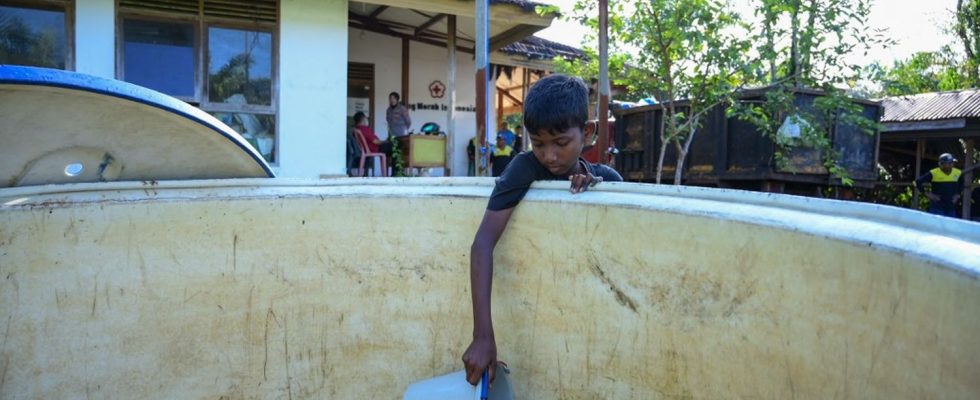According to World Bank estimates, in 2050 the planet will have 216 million climate refugees. The United Nations High Commission for Refugees wants to enable these populations to overcome these risks.

Published
Update
Reading time: 2 min

The objective of this Climate Resilience Fund, launched on Wednesday October 24 in Geneva, is to raise $100 million by the end of 2025. Although the effects of global warming are known, they are increasingly devastating. Repeated droughts, storms or floods ruin crops, create food insecurity, deprive residents of income, exacerbate conflicts and ultimately cause massive displacement of populations, the vast majority of them within the interior. countries.
In 2022, 32 million people have had to leave the place where they lived due to a natural disaster, this figure has increased by 40% in 15 years. These are the populations that the United Nations wants to help specifically. Today, that is not the case. When a country, for example, spends money to slow down climate change, it tackles its carbon emissions and develops clean energy, but it never provides a budget for displaced people. The UNHCR, the United Nations High Commissioner for Refugees, therefore wants to protect these populations in a targeted manner, giving them the means not only to prepare for risks, but also to overcome them.
Multiple possible applications
The projects to be financed can be very different from each other. We could cite Bangladesh, where UNHCR is already helping Rohingya refugees plant fast-growing trees on the hills. This device helps stabilize slopes and reduce the risk of landslides during the monsoon. In Ethiopia, people learn to make firewood from the bark of Prosopis, which is a very invasive weed. The objective in this case is to slow down deforestation. Elsewhere, there are schools or dispensaries that can be powered by solar energy or even displaced people trained in these issues who pass on their knowledge to the communities.
According to World Bank estimates, in 2050 the planet will have 216 million climate refugees. The upheavals that await us are such that with rising water levels, as you know, certain territories could simply disappear, such as the Tuvalu islands in Polynesia. The archipelago is also the first country to have signed a treaty with Australia which undertakes to offer climatic asylum to its 11,000 inhabitants, making the territory uninhabitable.
